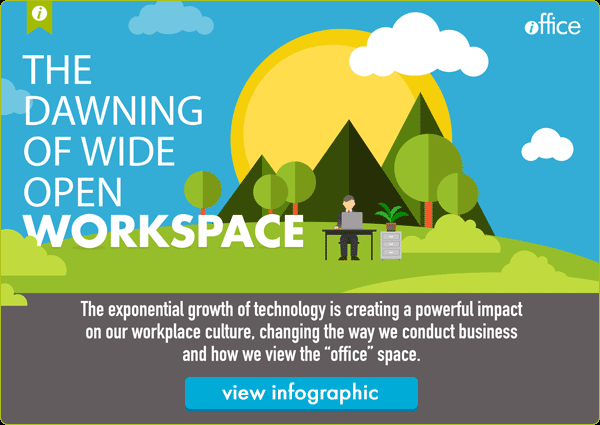How Do Facility Managers Implement Change in the Traditional Workspace


The traditional office building, with corner offices and cubicles, is fading in many industries. In the traditional office, around 80% of space was reserved for individuals, with the remaining space used for shared spaces like conference rooms. The ratios are evolving toward a more 50-50 breakdown between individual and collaborative space.
Why? For one thing, less office space is required in many industries, as more employees telecommute or work while on the road. For another, many companies have benefited from more open, flexible workspace, and many younger workers prefer them. In some companies up to half of the desks are unoccupied, despite having been assigned. Overall, up to one-quarter of employees work outside the office at any given time, so unused space is an unnecessary operating expense.
But turning a traditional office arrangement into a collaborative work environment is a challenge, to say the least. Not only must space be reallocated, but, sometimes deeply entrenched attitudes about what an office space should be must be modified. If you’re a facilities manager, you’re faced with both organizational and physical space challenges when your company transitions to a collaborative work environment, including figuring out which mix of spaces is right for your organization.
The key to reducing unused space (and the costs that go along with it) and developing a successful collaborative workspace is being mindful of company culture and individual worker needs.
Prime Considerations for Open Office Spaces
The shift to open, collaborative office spaces has increased over the past five to 10 years. It first gained traction in Europe, where collaborative office spaces are now considered the norm, and has since grown in popularity in North America. Today, more than two-thirds of North American employees work in open plan or open seating office arrangements.
Collaborative spaces, however, are not “one size fits all.” Ideally, the work environment accommodates all types of workers, from introverts to extroverts. The challenge may sound overwhelming, but there are ways to make collaborative workspaces address employee needs successfully. The spaces must include:
• Free-to-use spaces for thinking, brainstorming, or sketching out ideas on whiteboards
• Partitions or visual barriers to break huge spaces up and avoid an “aircraft hangar” feel
• A mix of spaces, including communal areas with tables and sofas to encourage collaboration, as well as smaller private zones where individuals can go when they need more solitude to accomplish their work.
Making the Transition to Collaborative Office Spaces

“Transition” is the key word. Making the change from a traditional office layout to a collaborative structure, particularly in a business with a multi-generational workforce, requires clear communication and change management. This might include:
• Identification of in-house leaders to help disseminate information
• “Town hall” meetings to explain changes, answer questions, and address concerns
• Models or drawings that depict the look and feel of the new workspace
• Any necessary training on new technology that may result from the change.
• Creation of open-office expectations as far as etiquette, meeting room use, and respecting quiet spaces.
Thoroughly preparing workers in advance, and having a “triage” team available during the actual move-in can help minimize disruption and make the experience positive.
The Essential Role of Space Management Software
A successful transition to an open, collaborative office space requires understanding what space is available, how it is used, the frequency of different uses of space, and who occupies it. Space management software is essential to planning and execution for most facilities managers. Your space management software should offer the following capabilities:
- Management of multiple locations within a single site or multiple buildings
- The ability to see floor plans online, including multiple CAD layers
- Detailed space statistics including information on occupancy, capacity, square footage, and floor level
- Stacking diagrams to let you see details about individual spaces on each floor
- The ability to create and assess different occupancy scenarios
- Contract management features for leases, etc.
- Asset identification and tracking
- Forecasting capability for space needs based on changes in employee population
- Detailed and focused information associated with each room or cubicle
- Personalization of room parameters
- Access control so plans are only disseminated publicly when they’re ready
- Capability for utilization calculations, whether based on occupancy, room type, room use, department, etc.
Conclusion
Making the change from the older cubicle-and-corner-offices space to an open, collaborative space is a big challenge for the facilities manager. Space management software in the hands of the experienced facilities manager can make all the difference. Changes like the transition to open space are often evolutionary, so you can implement them over time, without overwhelming the workforce or causing unnecessary disruption.
The change to collaborative workspace can change attitudes and empower employees to work better together and more efficiently. As the workplace changes, both physically and in terms of employee demographics, the facilities manager armed with great space management software is ready to ensure that the changes have positive effects.
